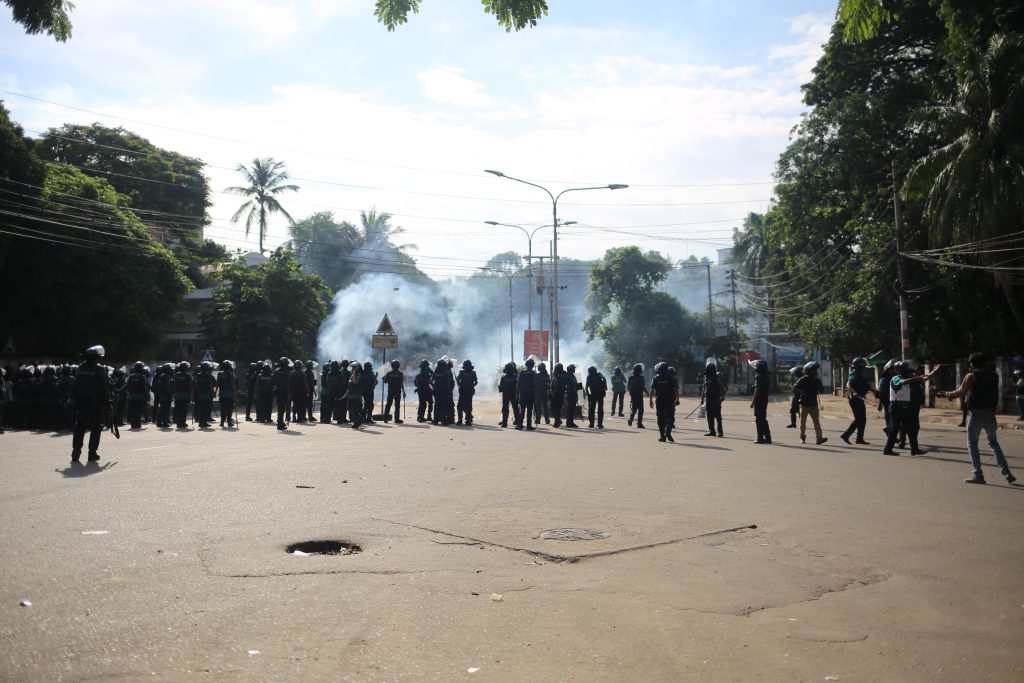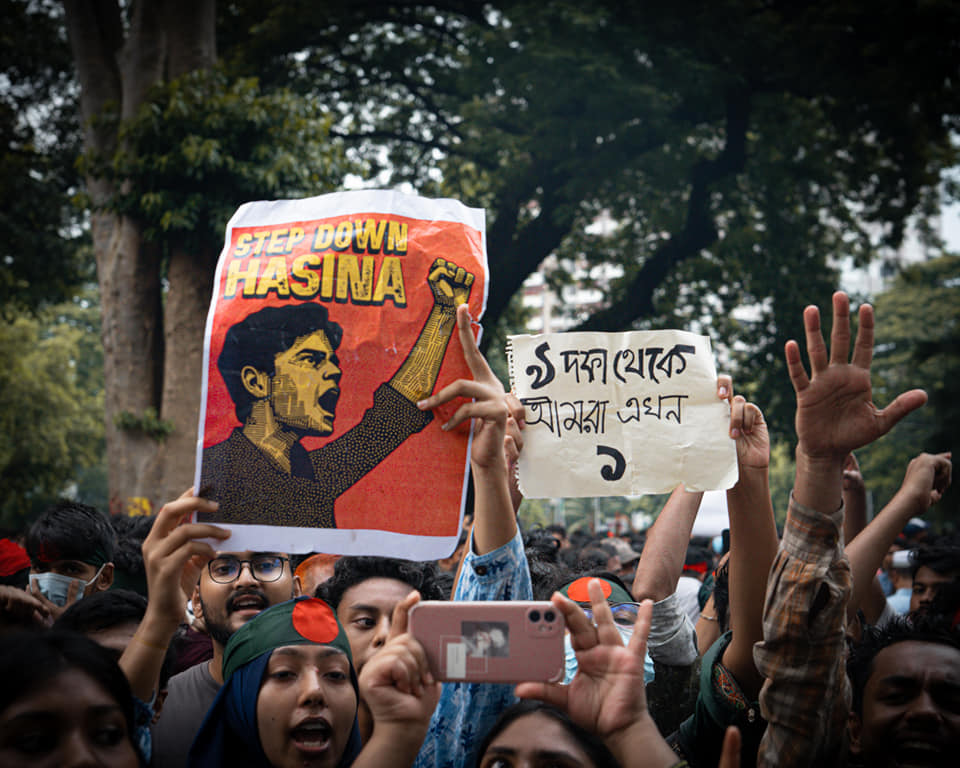On August 4, 2024, Bangladesh witnessed the bloodiest chapter in its political history—a day when peaceful protests for democratic reform were crushed by a violent and unprecedented crackdown, marking the final hours of Sheikh Hasina’s autocratic regime.
What began as a call for justice and change turned into one of the bloodiest confrontations the country had seen in decades, resulting in the deaths of hundreds and the wounding of thousands across the nation.
The day’s events transcended a mere clash between protesters and the law enforcement agencies.
In a chilling development, not only did the law enforcers used deadly force, but pro-Awami League (AL) supporters and members of AL-affiliated organizations joined in the violence, brandishing automatic weapons. Together, they launched a vicious assault on the unarmed protesters, leaving the streets of Dhaka and other parts of the country stained with blood.
The protests, which had been peaceful in nature, demanded the resignation of the then ruling government, calling for the restoration of democracy and an end to the autocratic rule. What followed was a brutal show of force by the authorities desperate to cling to power. The horrific scenes of students, workers, and citizens being gunned down in broad daylight revealed the regime’s willingness to employ any means necessary to suppress dissent.
Across the capital and reaching far beyond to the remote corners of the country, families mourned the loss of their loved ones as the death toll soared.

Reports from the ground painted a harrowing picture of violence, where protesters were subjected to torture, arrests, and a concerted effort to erase their voices. The crackdown wasn’t merely physical—it was a deliberate attempt to silence any opposition; a terrifying message sent to those who dared to demand change.
In the capital’s Shahbagh area, a central point of the protests, the streets were filled with sorrow as the bodies of those killed were paraded through the city, chanting slogans against the Hasina government.
As protesters marched with the fallen, calling for justice, they were met by tear gas and stunned grenades. The police, in collaboration with ruling party thugs, systematically targeted the demonstrators, seeking to break the spirit of resistance.
By the end of the day, the country was on the brink. The regime’s violent tactics, compounded by the involvement of political affiliates in the crackdown, exposed the deeply corrupt and repressive nature of the government.
A senior opposition figure, reflecting on the day’s events, declared, “This is the last day of an autocratic regime that has used violence to hold on to power, ignoring the will of the people.”
As the world watched in disbelief, Bangladesh faced a decisive moment in its history. The violent crackdown marked not just the end of a day, but the culmination of a struggle that had been brewing for years—a struggle for democracy, justice, and an end to tyranny.
The historic significance of August 4 will be remembered as the day Bangladesh’s people took a stand against autocracy, paying the ultimate price in the name of freedom and democracy.


